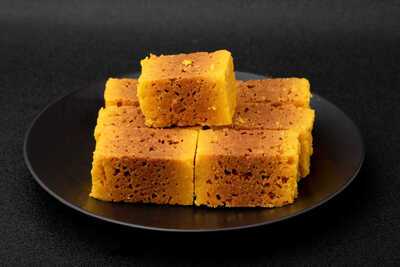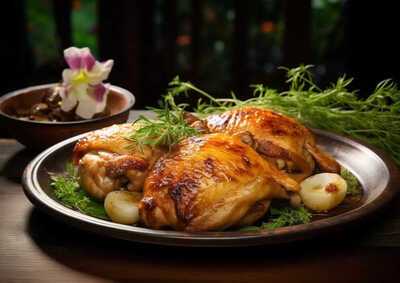Fermentation isn’t just a food process in the Northeast — it’s a way of life. Across the hills and valleys of Assam, Manipur, Nagaland, Mizoram and beyond, you’ll find all kinds of tangy, funky, flavour-packed ingredients bubbling quietly in kitchen corners or packed in bamboo baskets. These aren’t your usual pickles and curds — these are ancestral techniques passed down generations, rooted in the land and made with care. And the best part? These foods don’t just taste incredible — they’re amazing for your gut, immunity and energy. Think of them as India’s very own superfoods, only with more history. Let’s get to know some of the fermented gems from the Northeast that truly deserve their time in the spotlight.
Axone (Nagaland)

If you’ve heard of one fermented food from this region, it’s probably axone. Made from soybeans that are cooked, fermented and sometimes smoked, axone is bold — both in flavour and aroma. It’s not for the faint of heart, but once you try it, there’s no going back. Usually added to pork or chutneys, this dish brings umami to the next level. The fermentation makes soy easier to digest, reduces anti-nutrients, and adds gut-friendly bacteria to your meal.
Ngari (Manipur)
Ngari is a fermented fish that sits at the core of Manipuri cooking. Made by sun-drying freshwater fish and leaving it to ferment naturally over months, it builds a bold, intense flavour that’s hard to forget. A small amount is all it takes to transform a chutney or curry — it’s strong, savoury, and deeply umami. Beyond the flavour, it’s also packed with nutrition. Fermentation makes it easier to digest and introduces good bacteria for your gut. It’s also a solid source of B-vitamins, which your body needs for energy and overall metabolism.
Mesu (Sikkim)

This one’s for bamboo lovers. Mesu is made from fermented bamboo shoots and is a tangy, crunchy, slightly spicy delicacy in Sikkimese kitchens. It’s often stir-fried or eaten as a side dish with rice. Bamboo shoots, by themselves, are full of fibre and antioxidants — but when fermented, they gain probiotic qualities that support your gut and immunity. Mesu also has a naturally sour profile that wakes up your tastebuds and adds excitement to any simple meal.
Tungrymbai (Meghalaya)
This Khasi favourite is another fermented soybean wonder — but this one’s cooked with local herbs, black sesame, and sometimes pork fat. It’s rich, earthy, and deeply satisfying. Tungrymbai is typically served hot with rice, especially in colder months. Since it’s packed with proteins that have been broken down through fermentation, it’s easy on the stomach and nourishing for the body. Plus, the natural fermentation process adds a dose of beneficial bacteria that help your digestive system stay balanced.
Bekang (Mizoram)
Bekang is Mizoram’s version of fermented soybeans — sticky, strong-smelling, and seriously full of flavour. People usually mix it into meat dishes or have it with plain rice, and a little goes a long way. It’s mostly made at home, packed into earthen pots, and left to do its thing until it turns into this bold, funky condiment. Like other fermented soy foods, it’s great for digestion, packed with nutrients, and even supports overall health. Plus, since it packs such a punch, you don’t need much to level up a whole meal.
Poora Haah and Poora Maas (Assam)

These aren’t strictly fermented in the way the others are, but they involve a clever mix of smoking, ageing and drying — often resulting in fermentation-like effects. Poora haah (smoked duck) and poora maas (smoked fish) are stored for weeks or months and develop deep, umami-rich flavours. Though smoking isn’t always associated with gut health, the slow ageing process does support some microbial development. These foods are protein-dense, warming, and perfect for monsoon or winter seasons when the body craves hearty nourishment.
Axone (Nagaland)
If you’ve heard of one fermented food from this region, it’s probably axone. Made from soybeans that are cooked, fermented and sometimes smoked, axone is bold — both in flavour and aroma. It’s not for the faint of heart, but once you try it, there’s no going back. Usually added to pork or chutneys, this dish brings umami to the next level. The fermentation makes soy easier to digest, reduces anti-nutrients, and adds gut-friendly bacteria to your meal.
Ngari (Manipur)
Ngari is a fermented fish that sits at the core of Manipuri cooking. Made by sun-drying freshwater fish and leaving it to ferment naturally over months, it builds a bold, intense flavour that’s hard to forget. A small amount is all it takes to transform a chutney or curry — it’s strong, savoury, and deeply umami. Beyond the flavour, it’s also packed with nutrition. Fermentation makes it easier to digest and introduces good bacteria for your gut. It’s also a solid source of B-vitamins, which your body needs for energy and overall metabolism.
Mesu (Sikkim)
This one’s for bamboo lovers. Mesu is made from fermented bamboo shoots and is a tangy, crunchy, slightly spicy delicacy in Sikkimese kitchens. It’s often stir-fried or eaten as a side dish with rice. Bamboo shoots, by themselves, are full of fibre and antioxidants — but when fermented, they gain probiotic qualities that support your gut and immunity. Mesu also has a naturally sour profile that wakes up your tastebuds and adds excitement to any simple meal.
Tungrymbai (Meghalaya)
This Khasi favourite is another fermented soybean wonder — but this one’s cooked with local herbs, black sesame, and sometimes pork fat. It’s rich, earthy, and deeply satisfying. Tungrymbai is typically served hot with rice, especially in colder months. Since it’s packed with proteins that have been broken down through fermentation, it’s easy on the stomach and nourishing for the body. Plus, the natural fermentation process adds a dose of beneficial bacteria that help your digestive system stay balanced.
Bekang (Mizoram)
Bekang is Mizoram’s version of fermented soybeans — sticky, strong-smelling, and seriously full of flavour. People usually mix it into meat dishes or have it with plain rice, and a little goes a long way. It’s mostly made at home, packed into earthen pots, and left to do its thing until it turns into this bold, funky condiment. Like other fermented soy foods, it’s great for digestion, packed with nutrients, and even supports overall health. Plus, since it packs such a punch, you don’t need much to level up a whole meal.
Poora Haah and Poora Maas (Assam)
These aren’t strictly fermented in the way the others are, but they involve a clever mix of smoking, ageing and drying — often resulting in fermentation-like effects. Poora haah (smoked duck) and poora maas (smoked fish) are stored for weeks or months and develop deep, umami-rich flavours. Though smoking isn’t always associated with gut health, the slow ageing process does support some microbial development. These foods are protein-dense, warming, and perfect for monsoon or winter seasons when the body craves hearty nourishment.
You may also like

Chew neem leaves on an empty stomach, you can't even imagine what will happen next

Bukayo Saka's warning to Arsenal about Eberechi Eze speaks volumes as £70m transfer mooted

Moment Bohemians and Derry football thugs attack each other with fireworks

Ian Wright left in stitches by 8-year-old England fan's response to Alex Scott question

Peace lilies will flower year-round if they're fed 1 kitchen scrap - not banana peel






